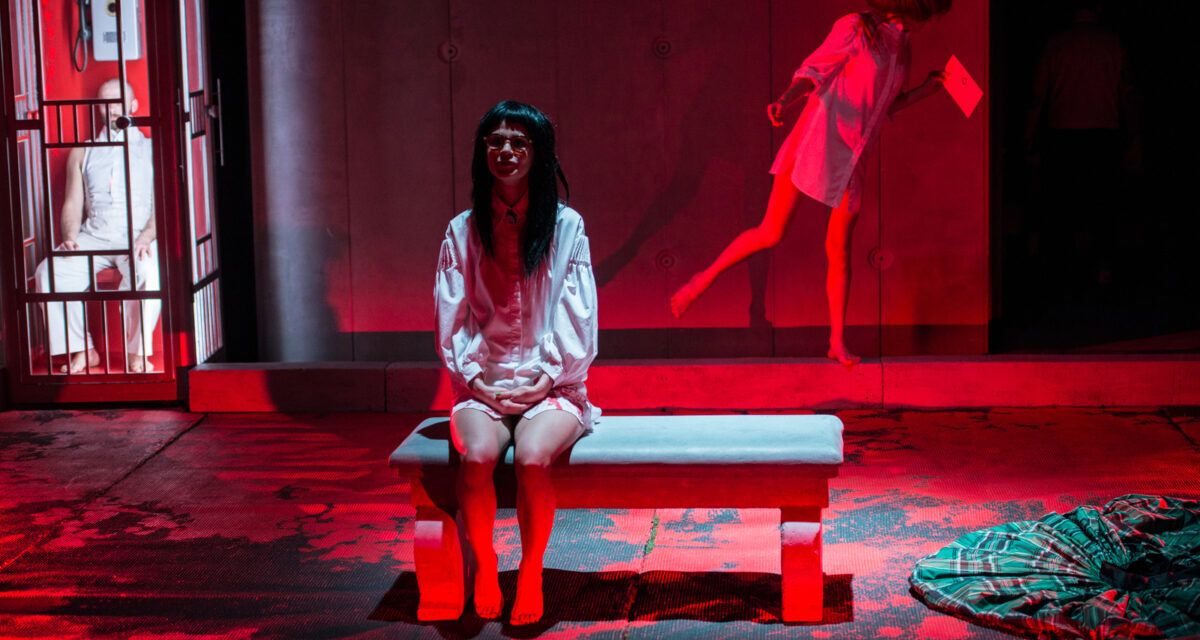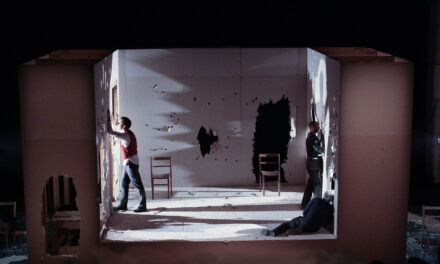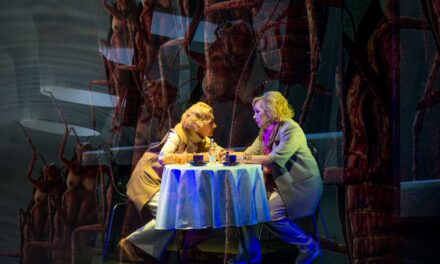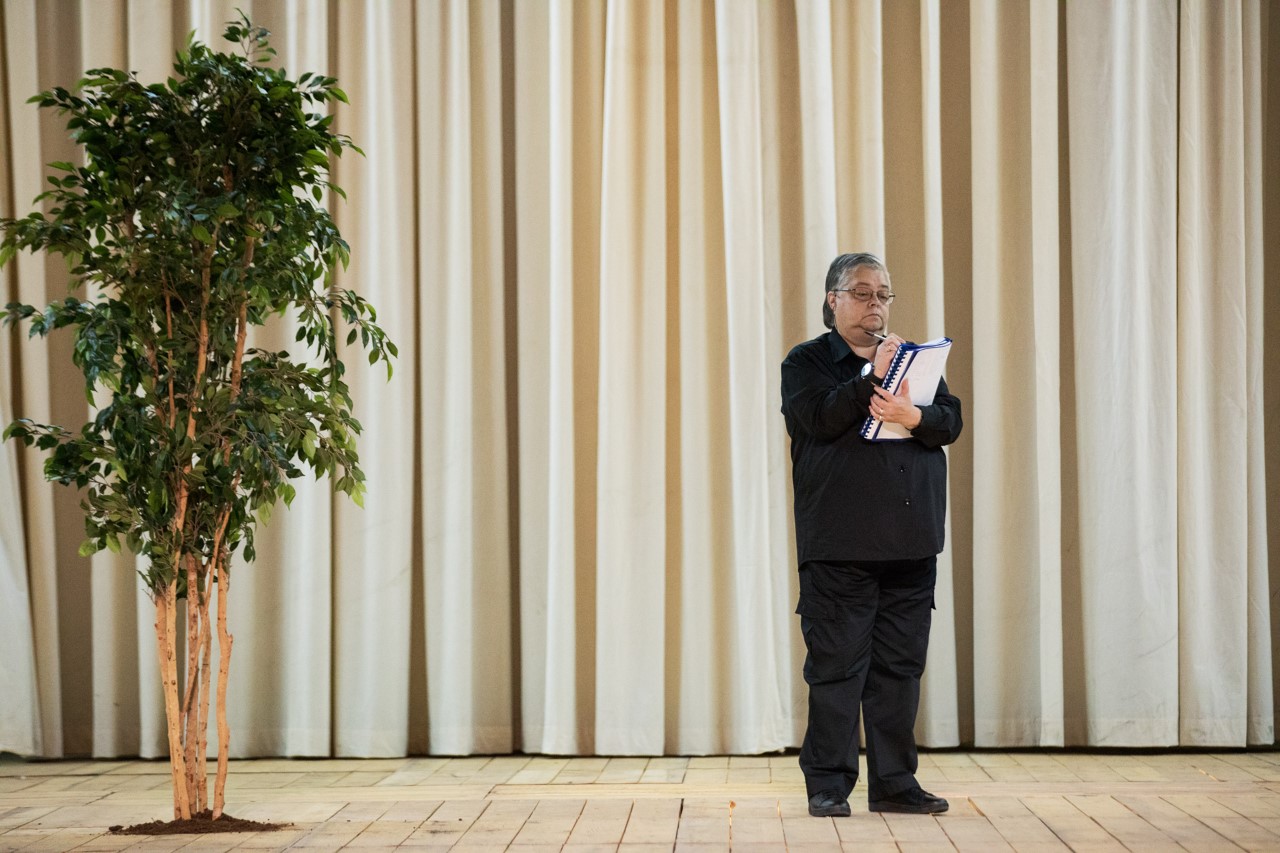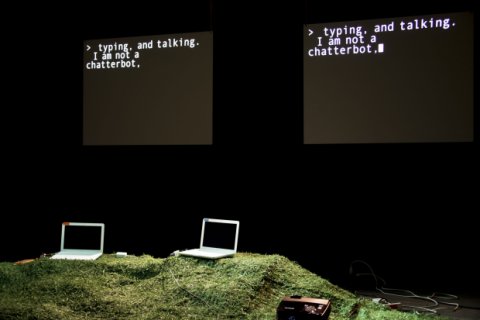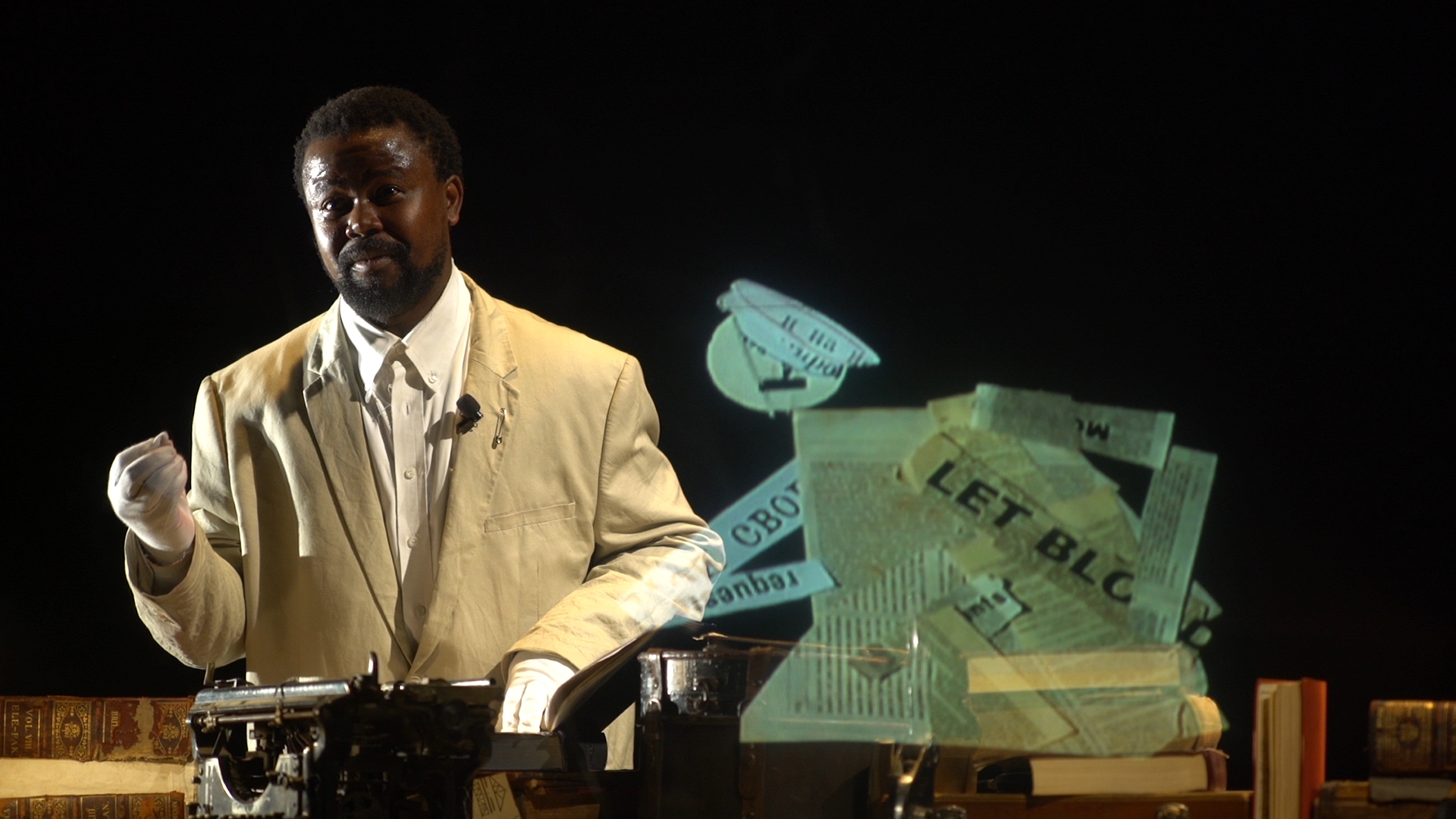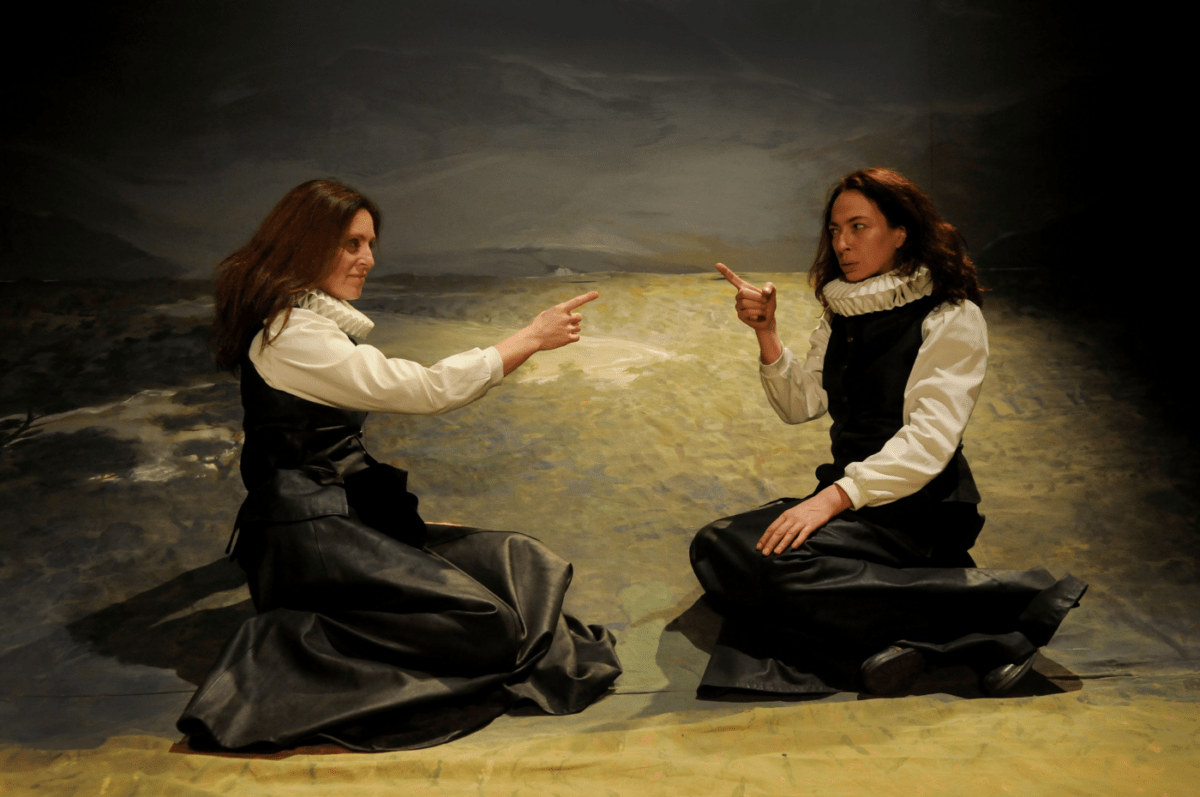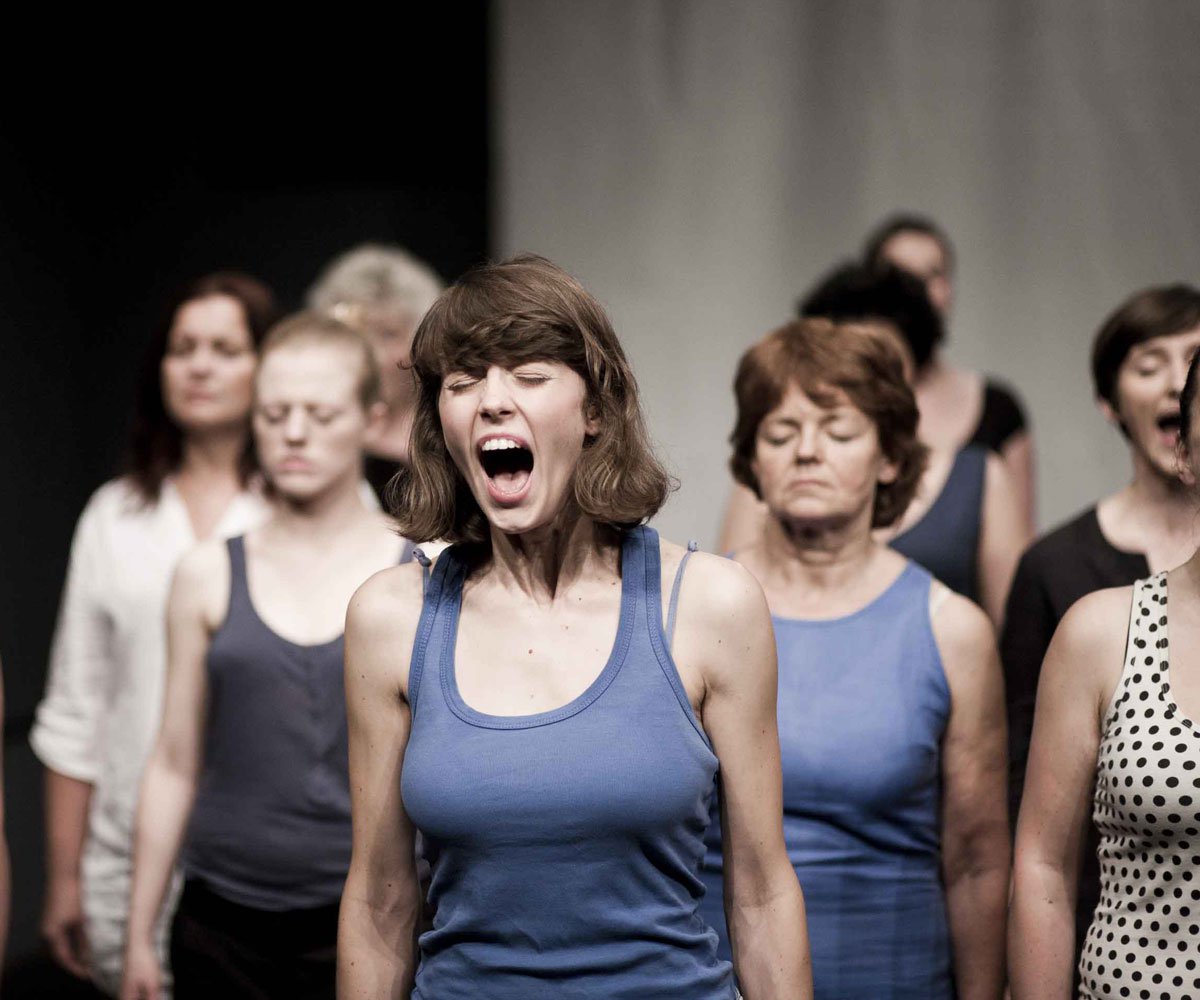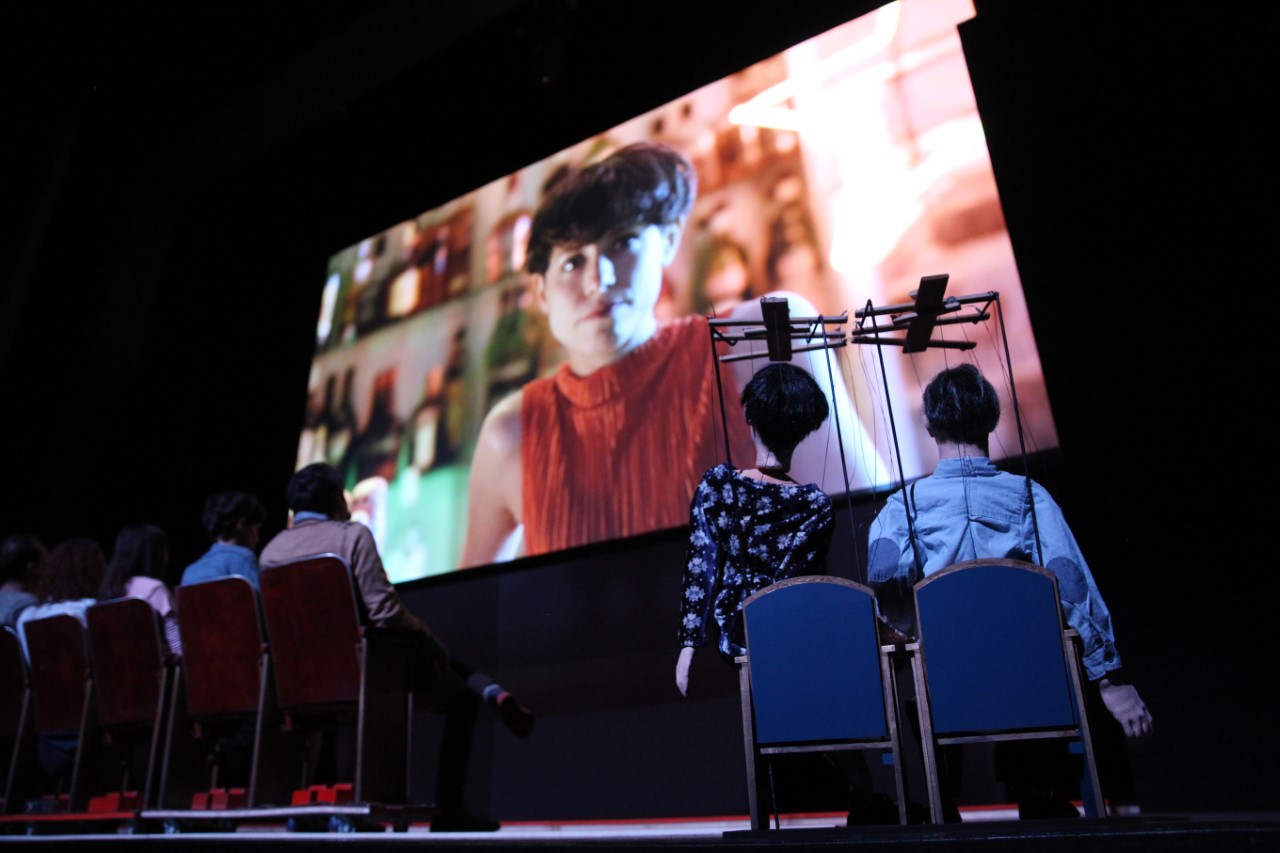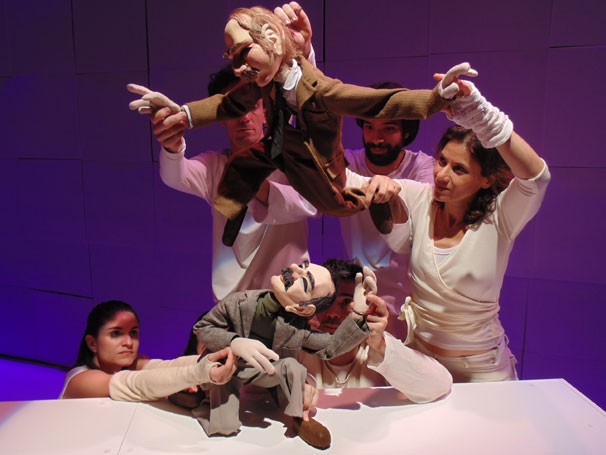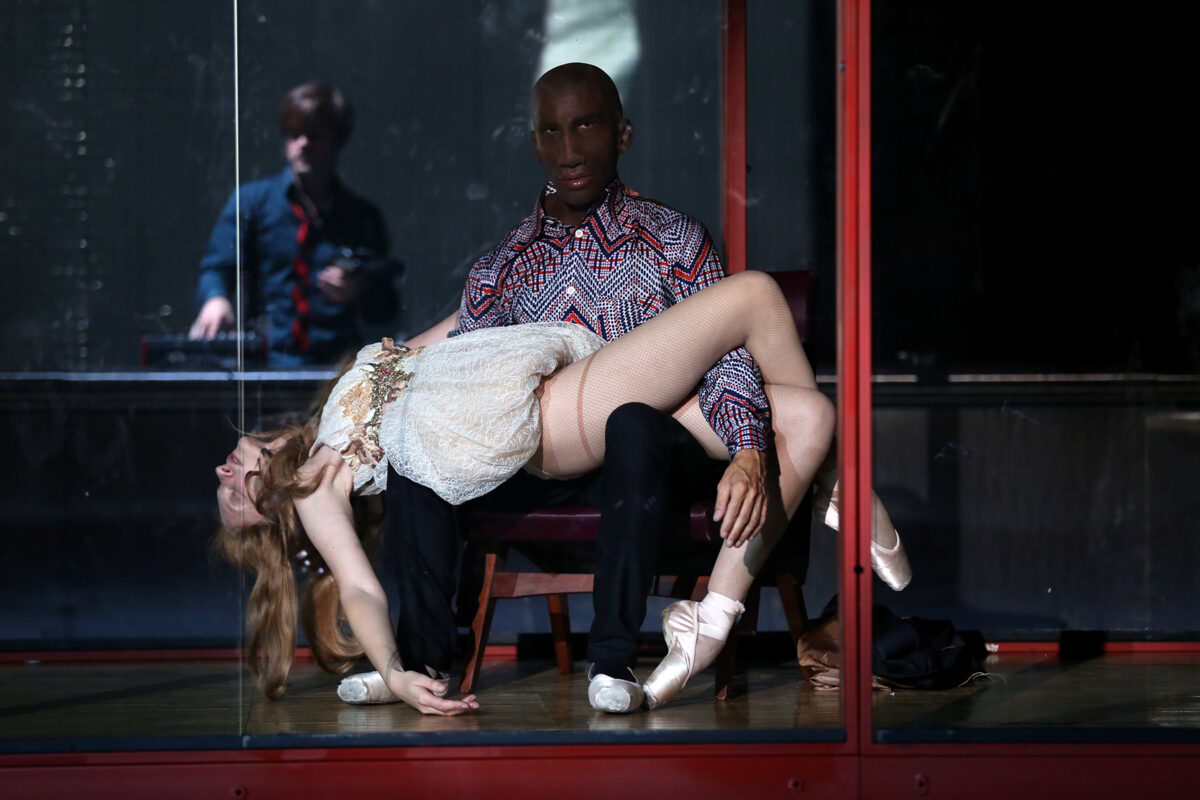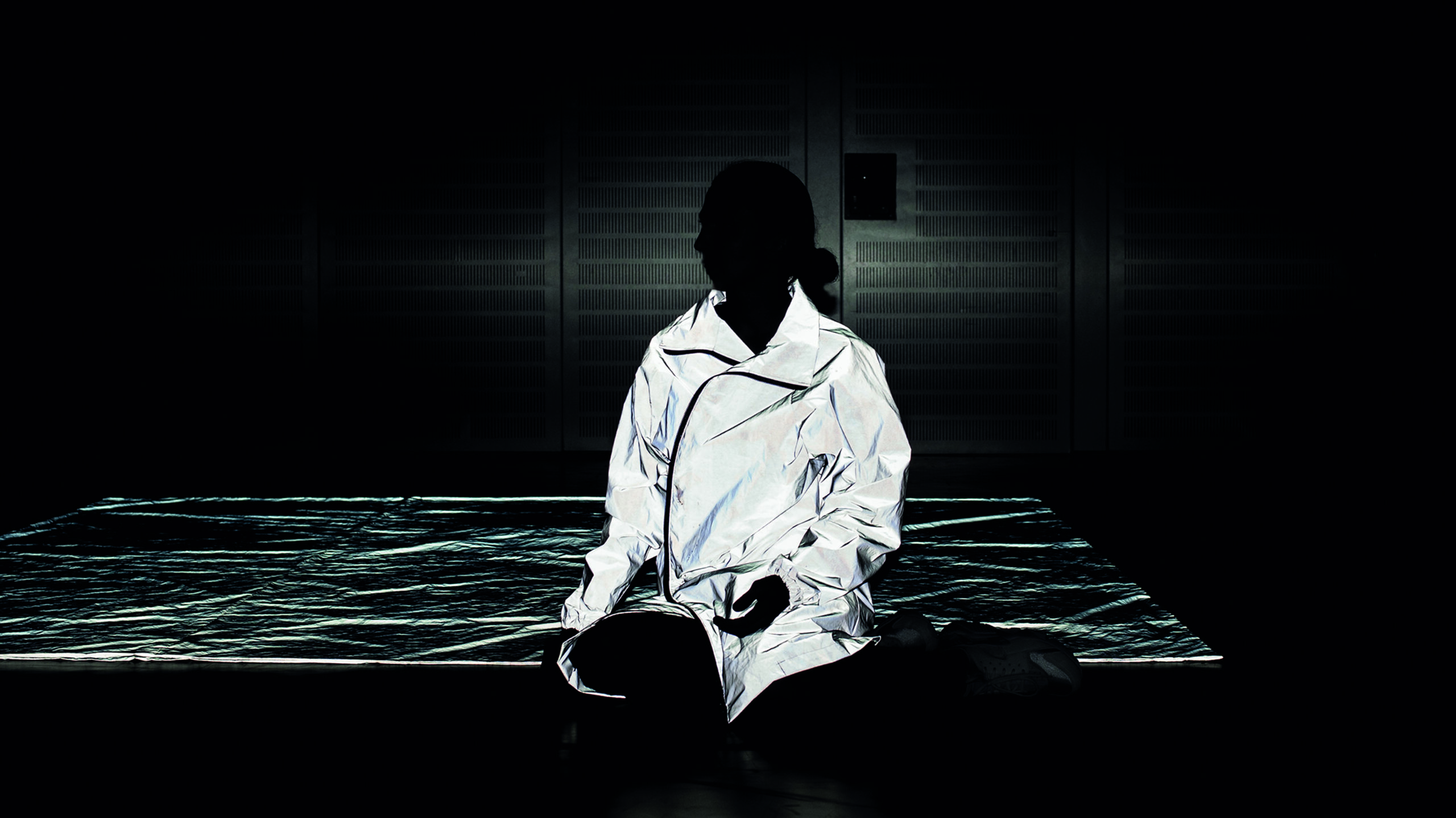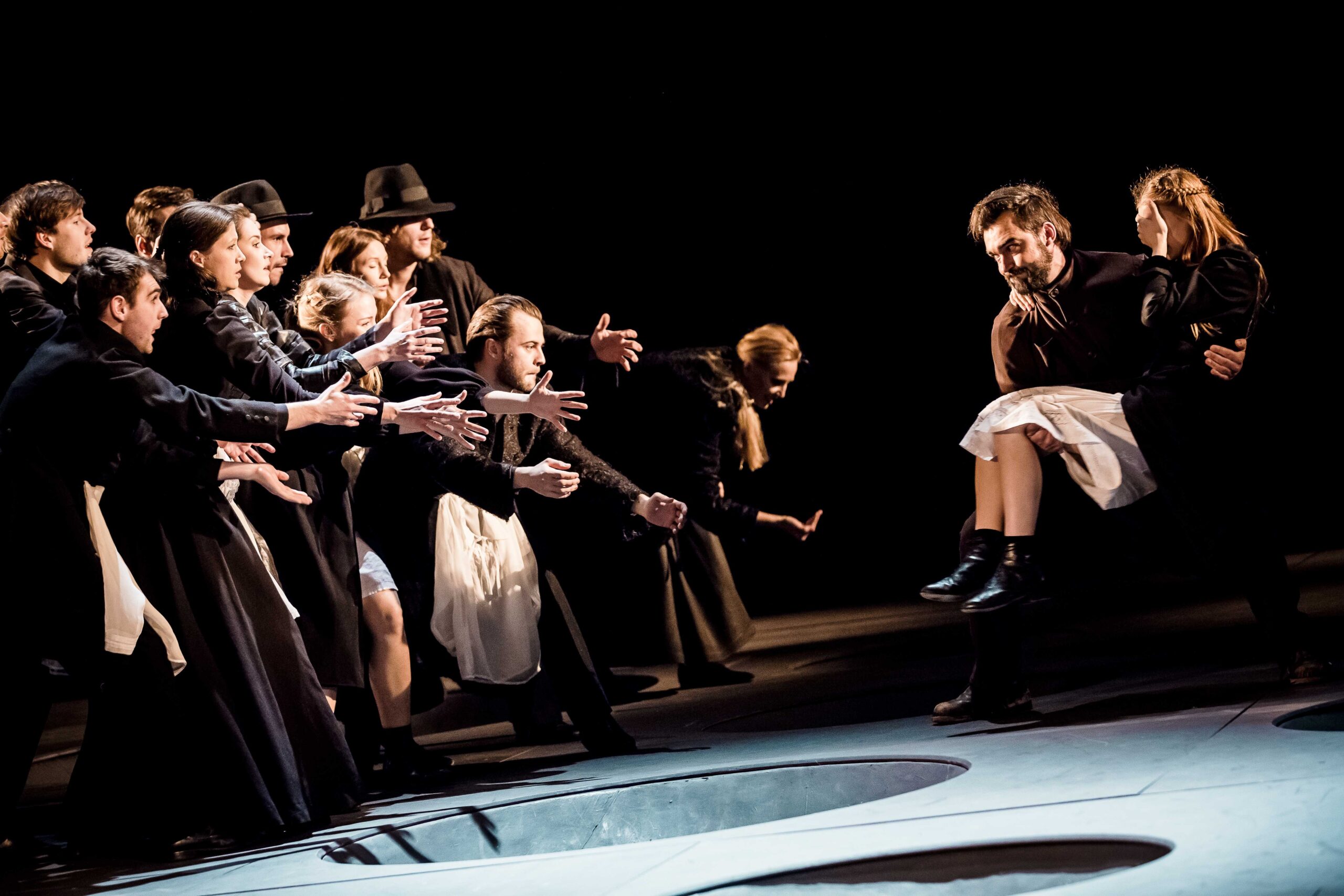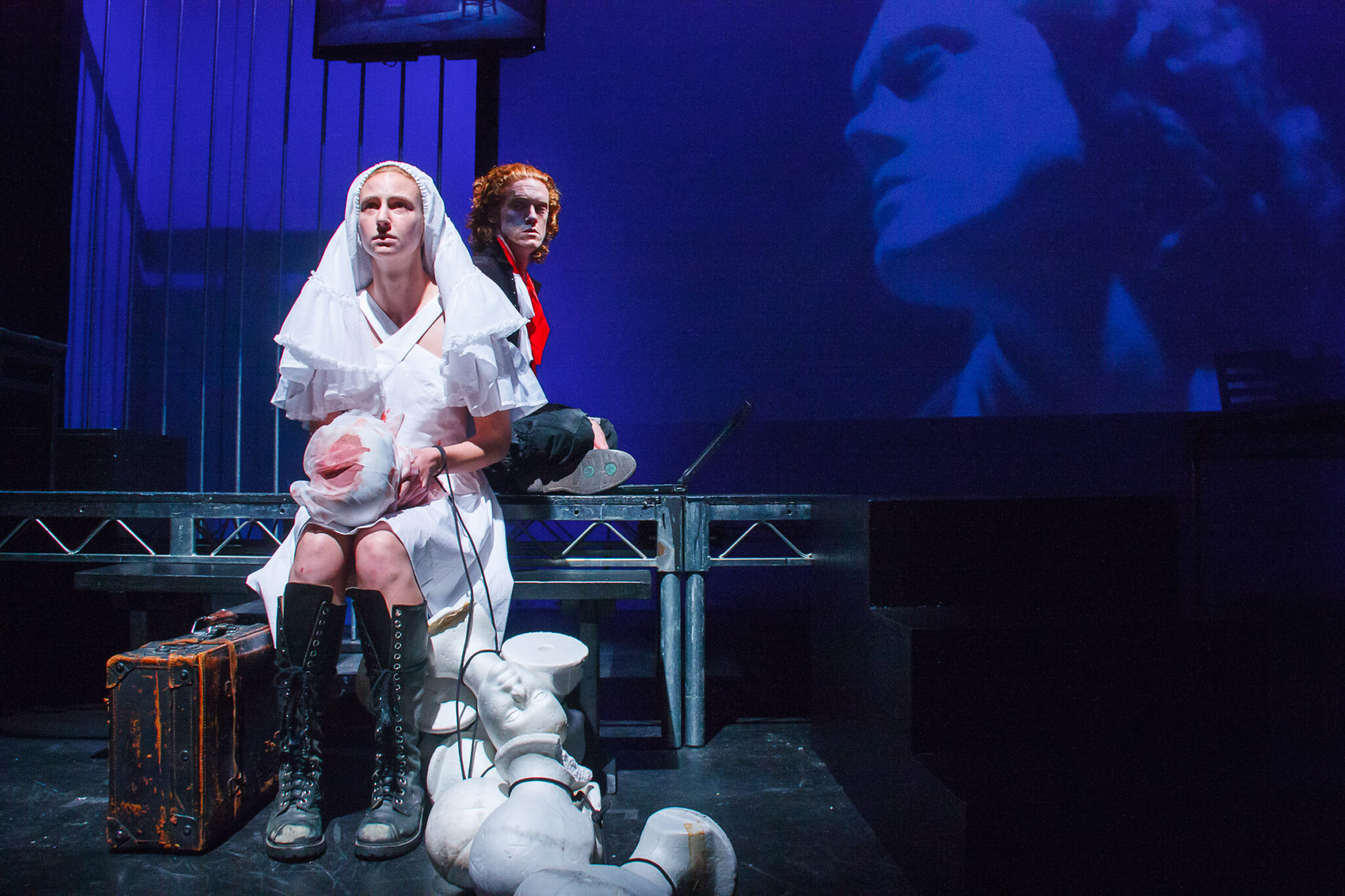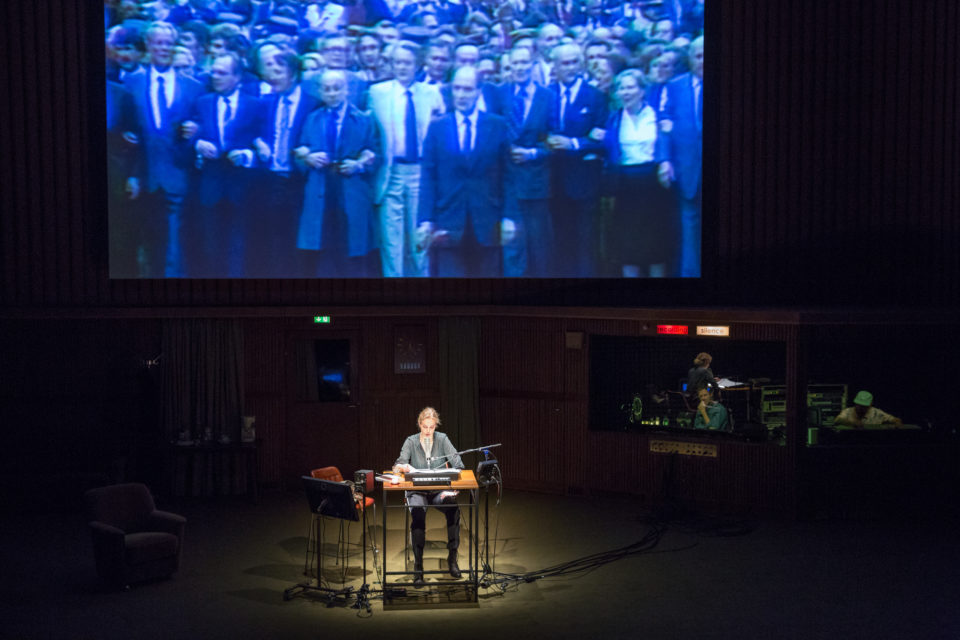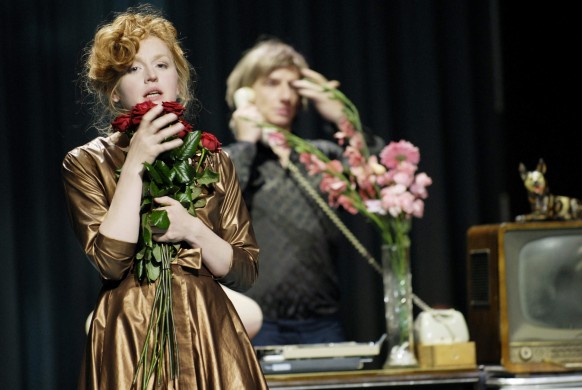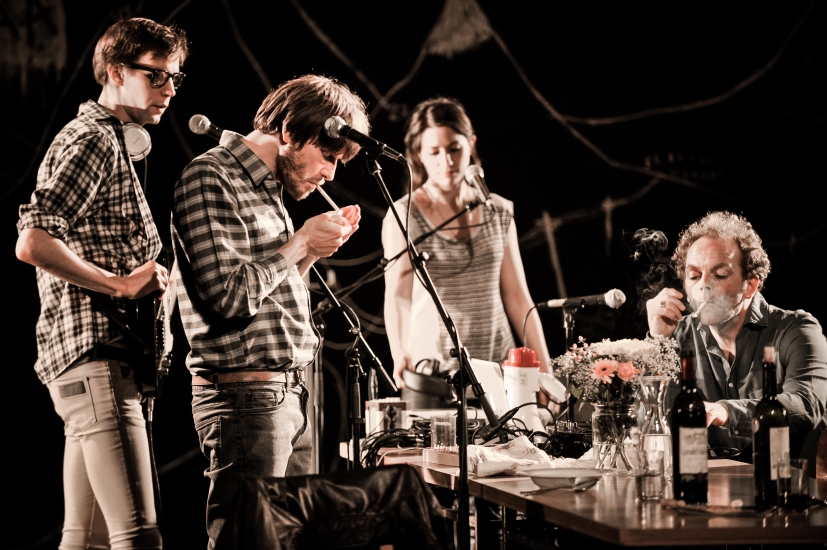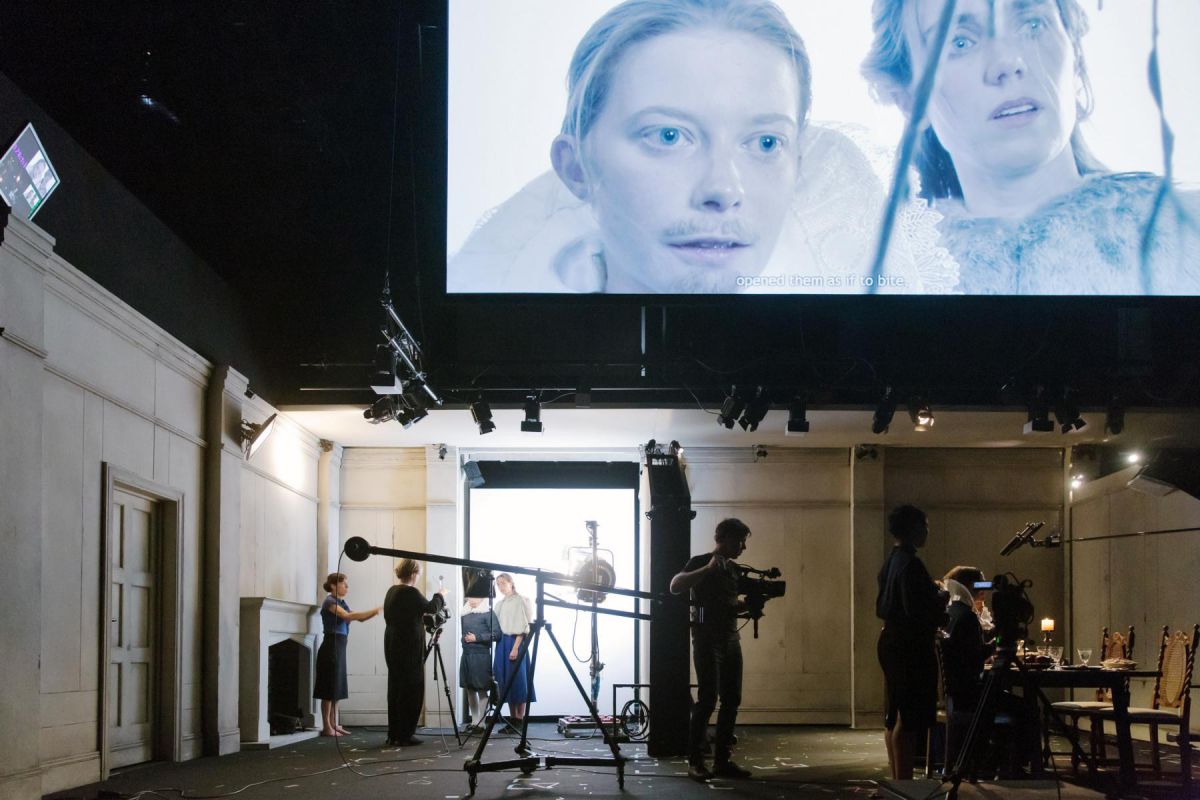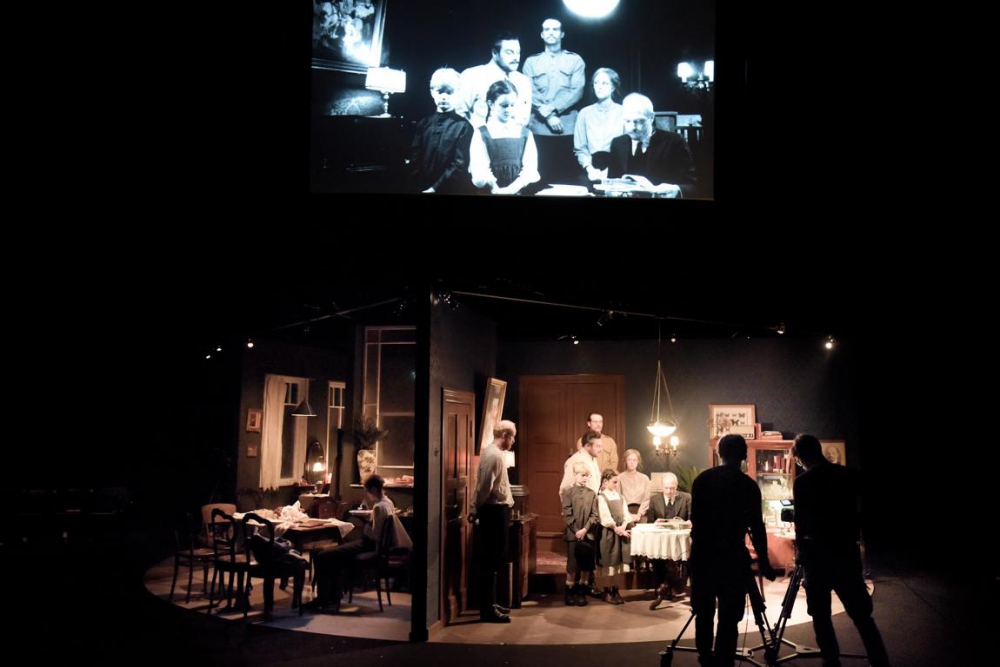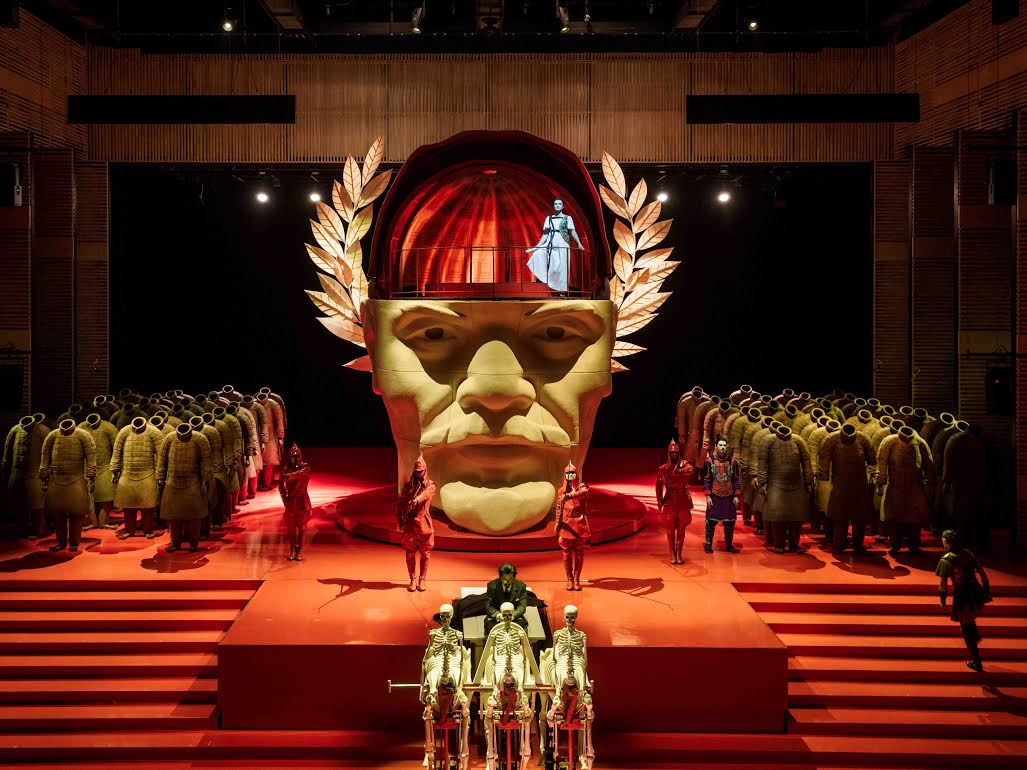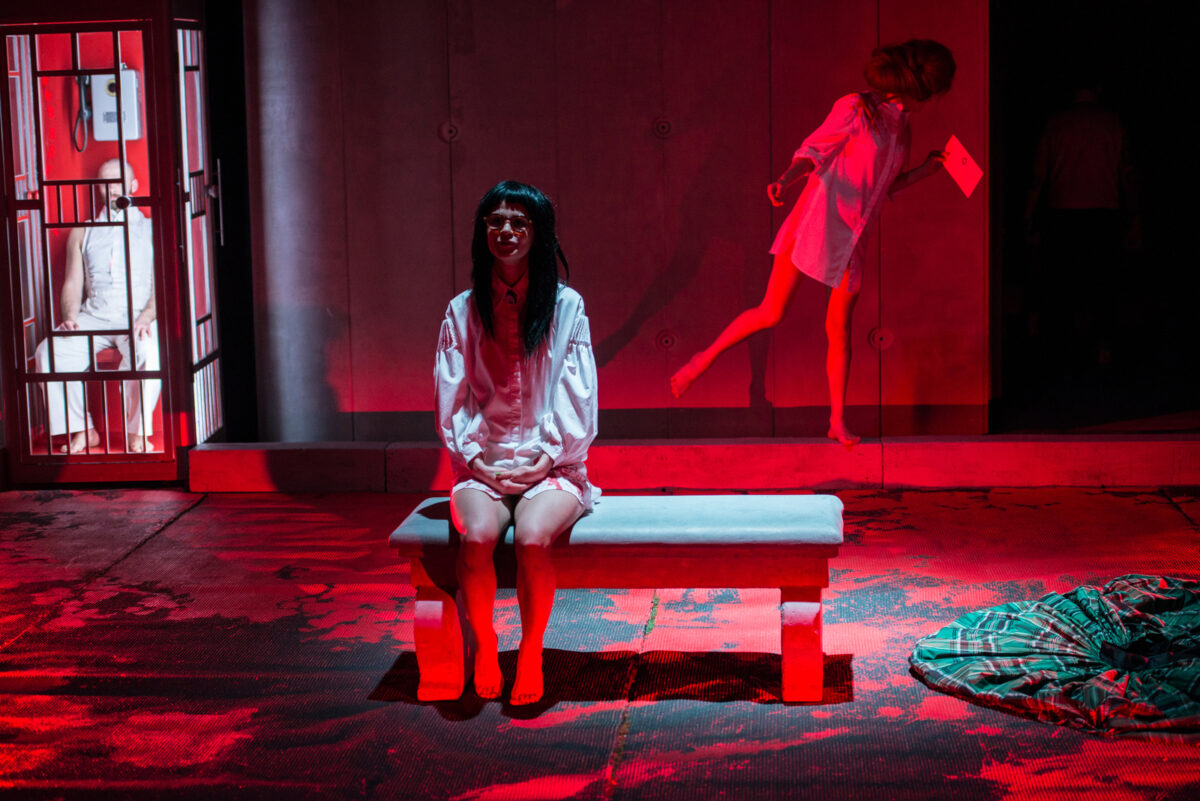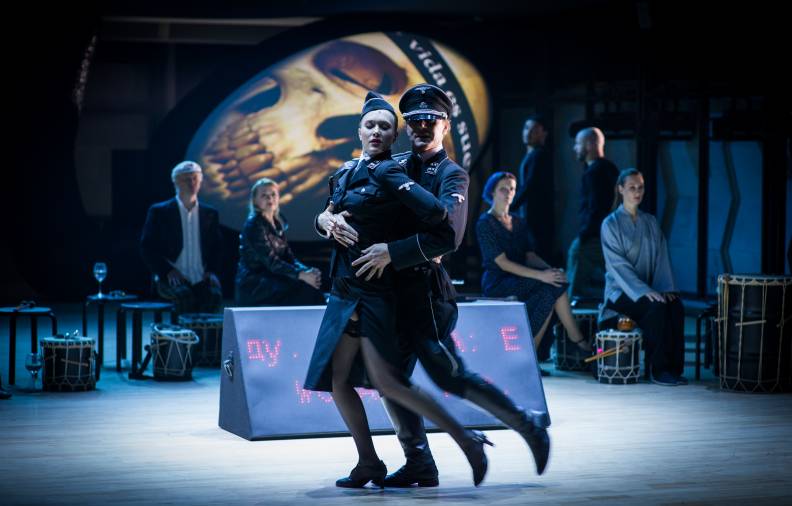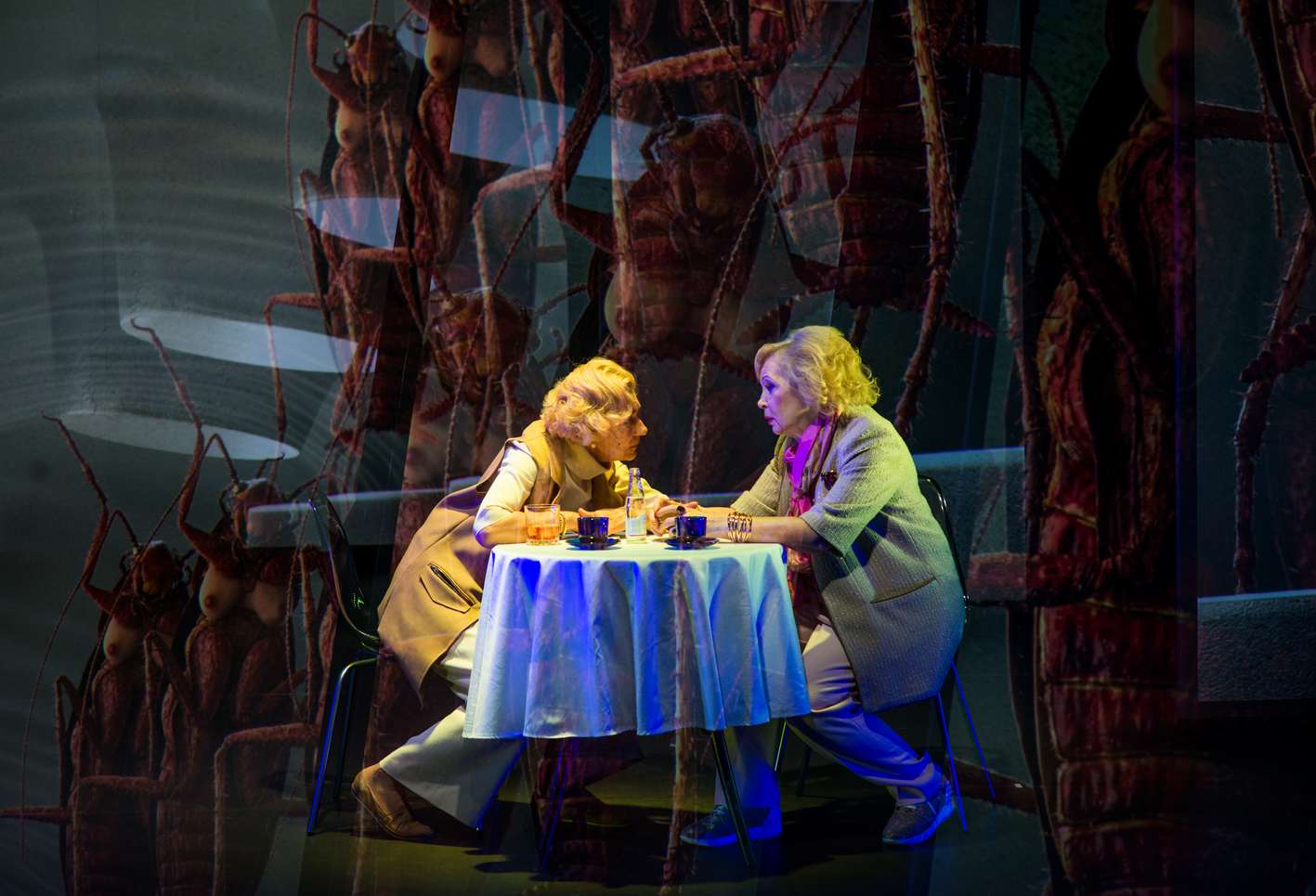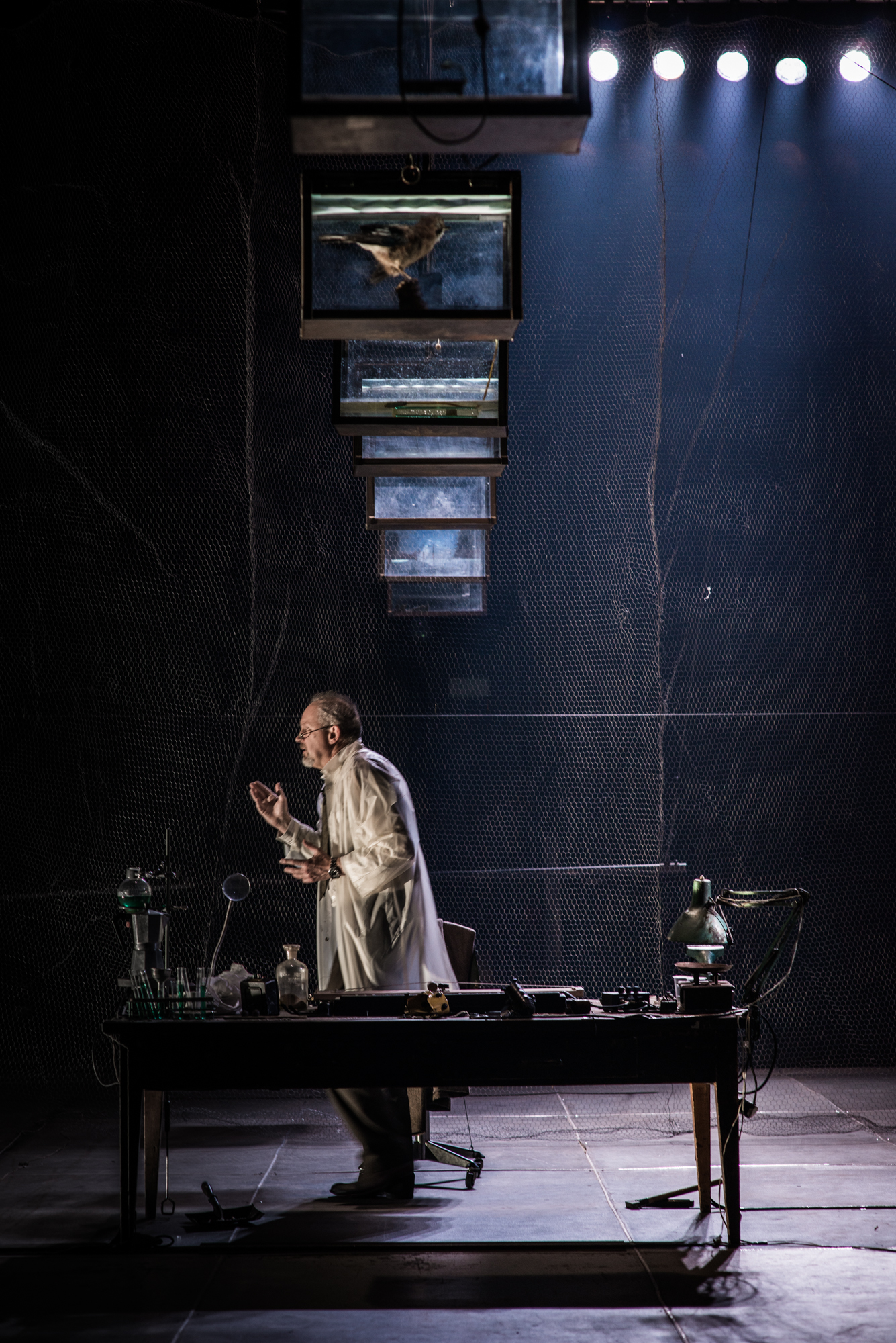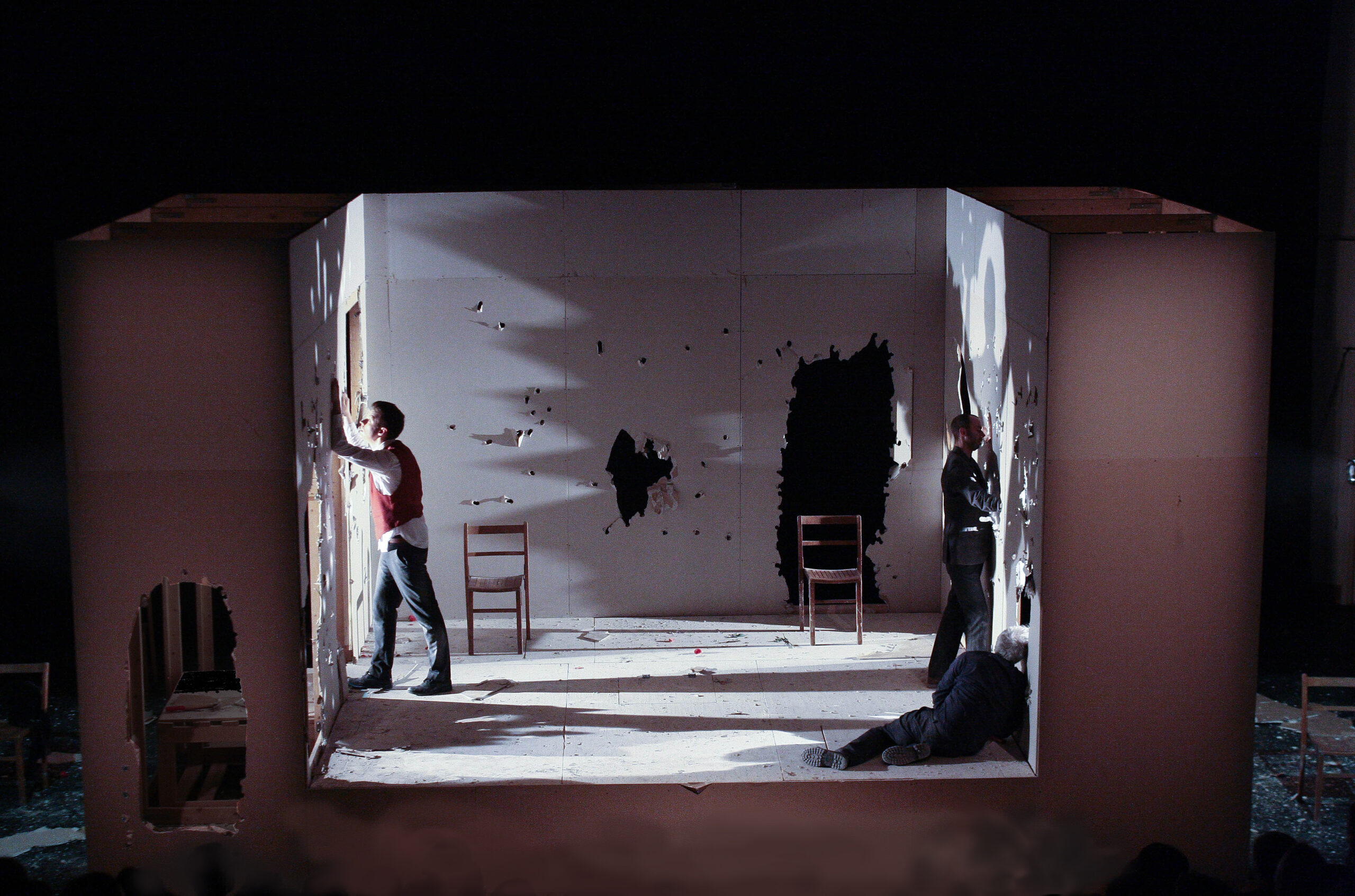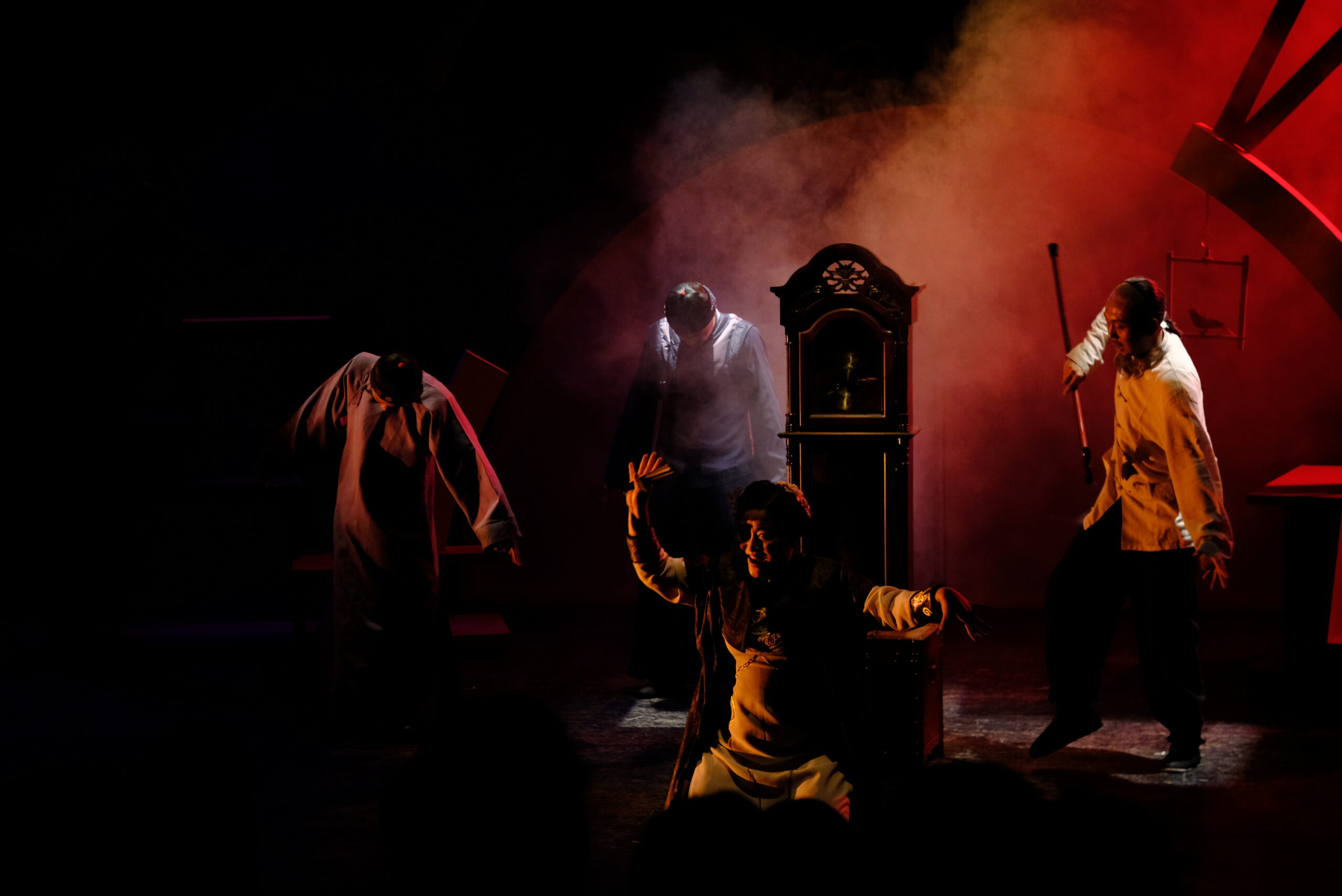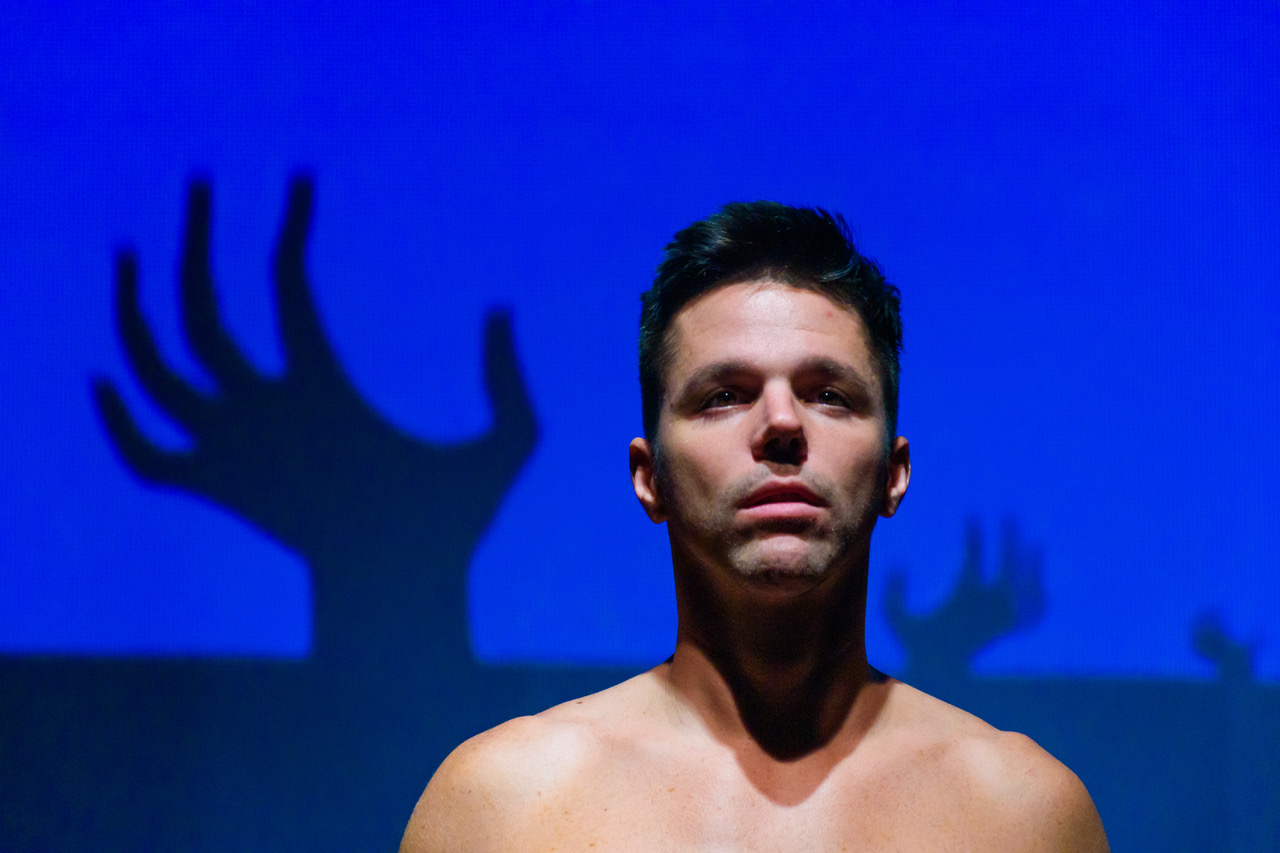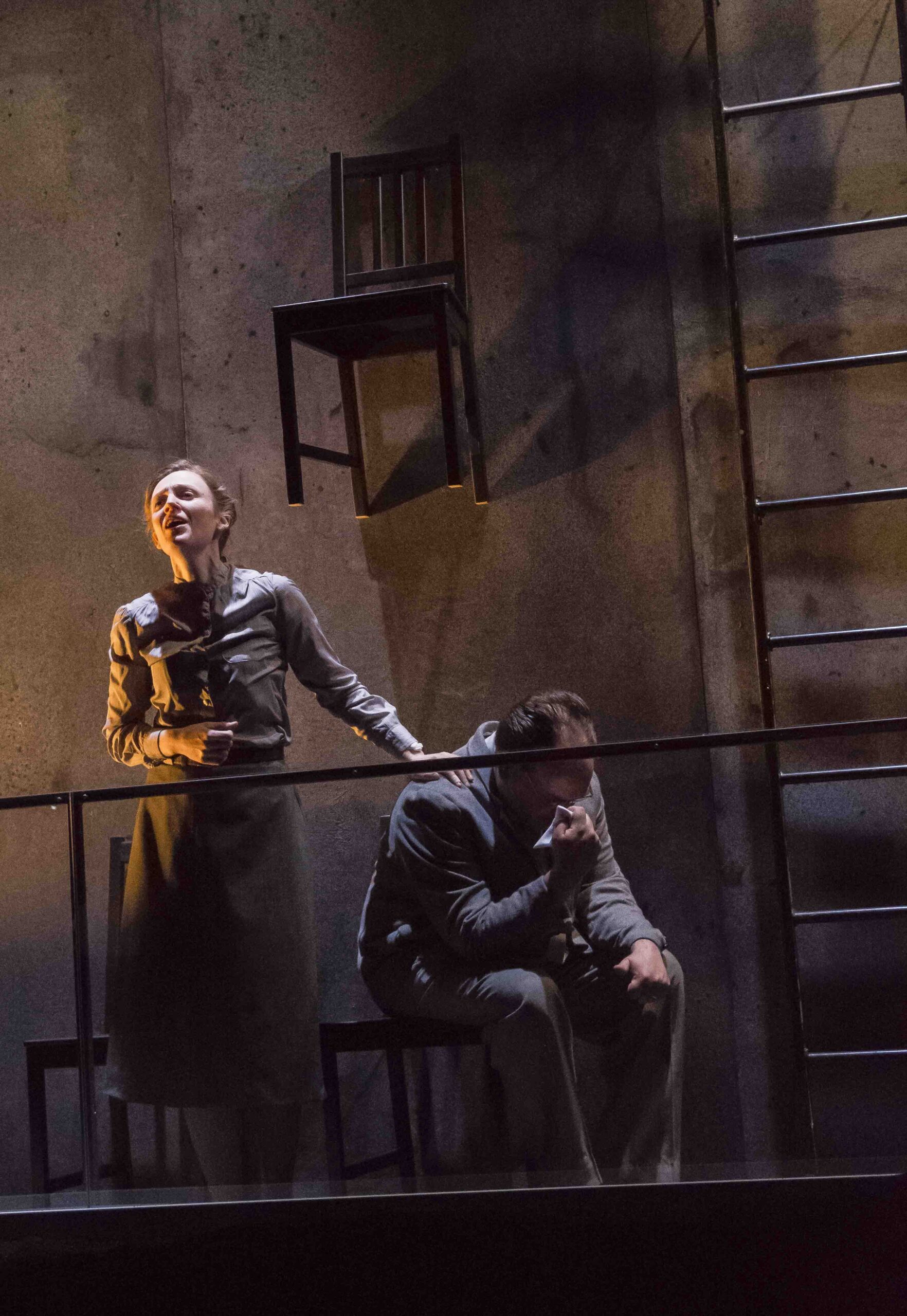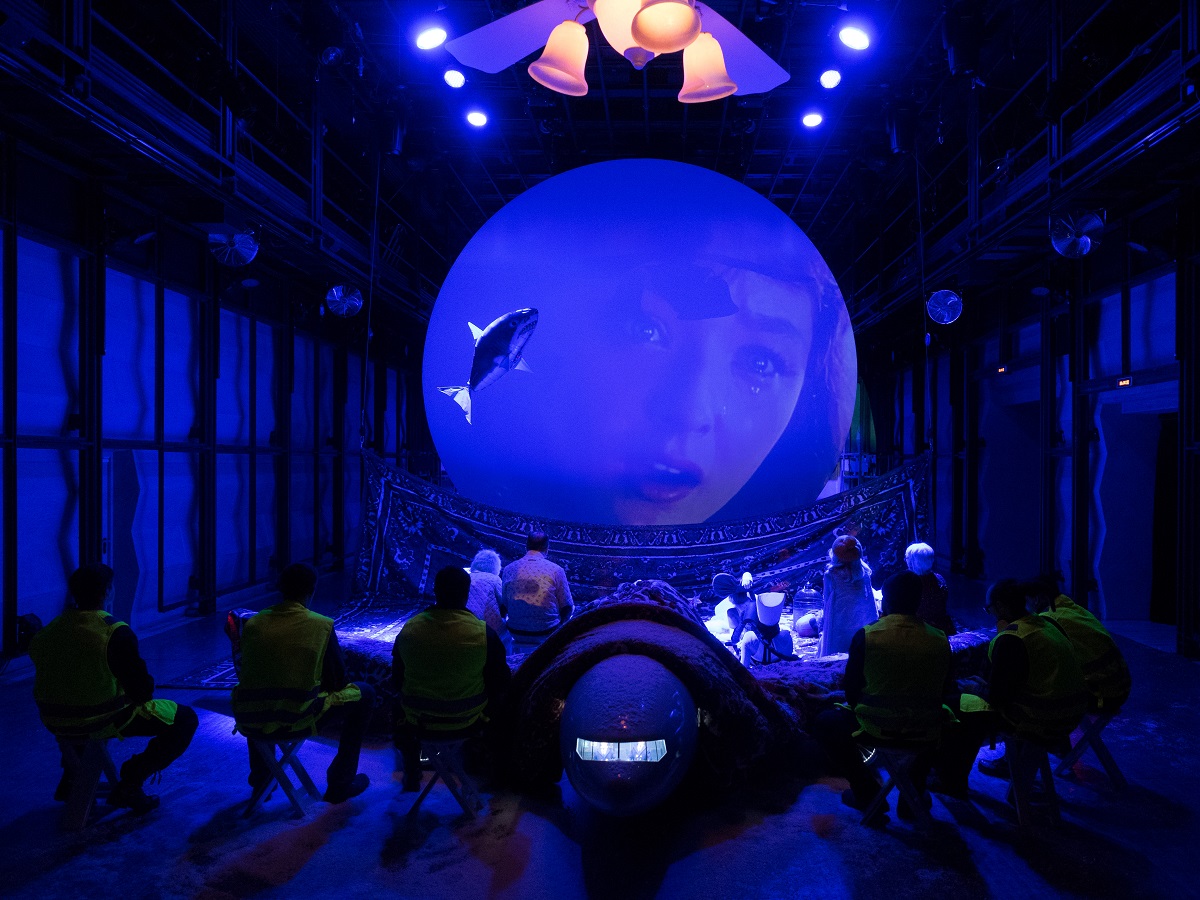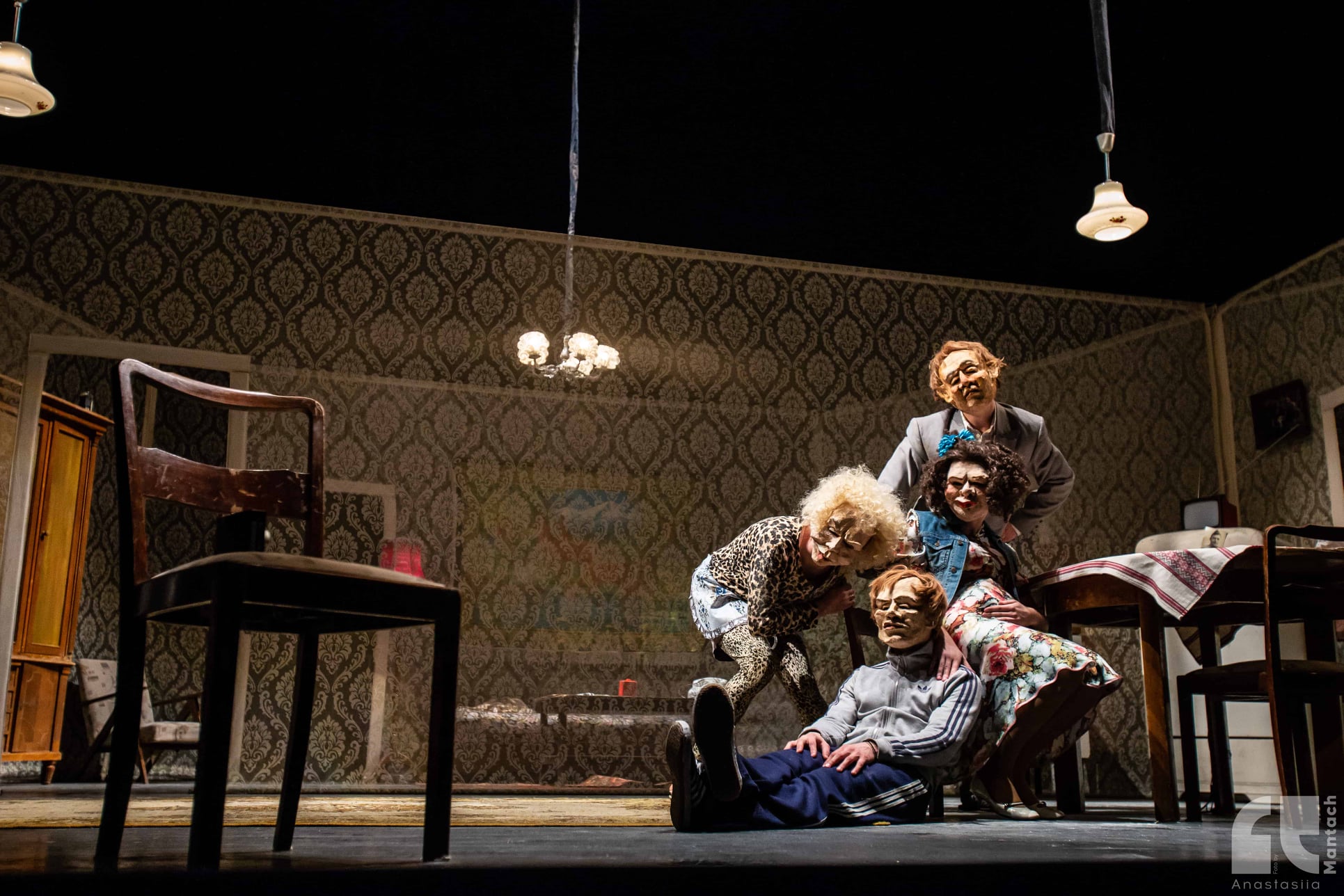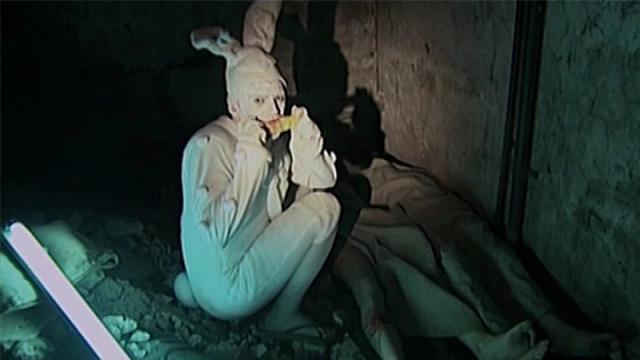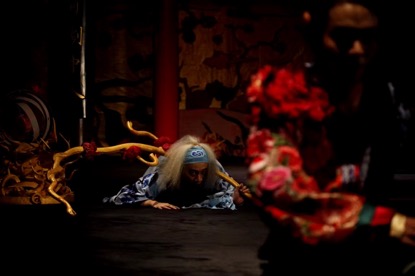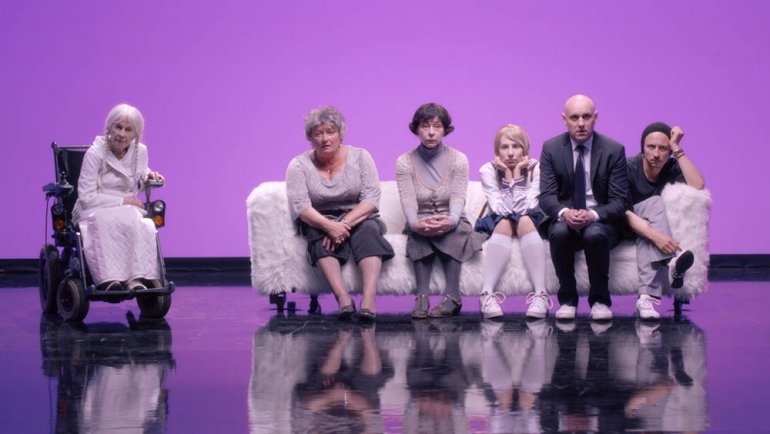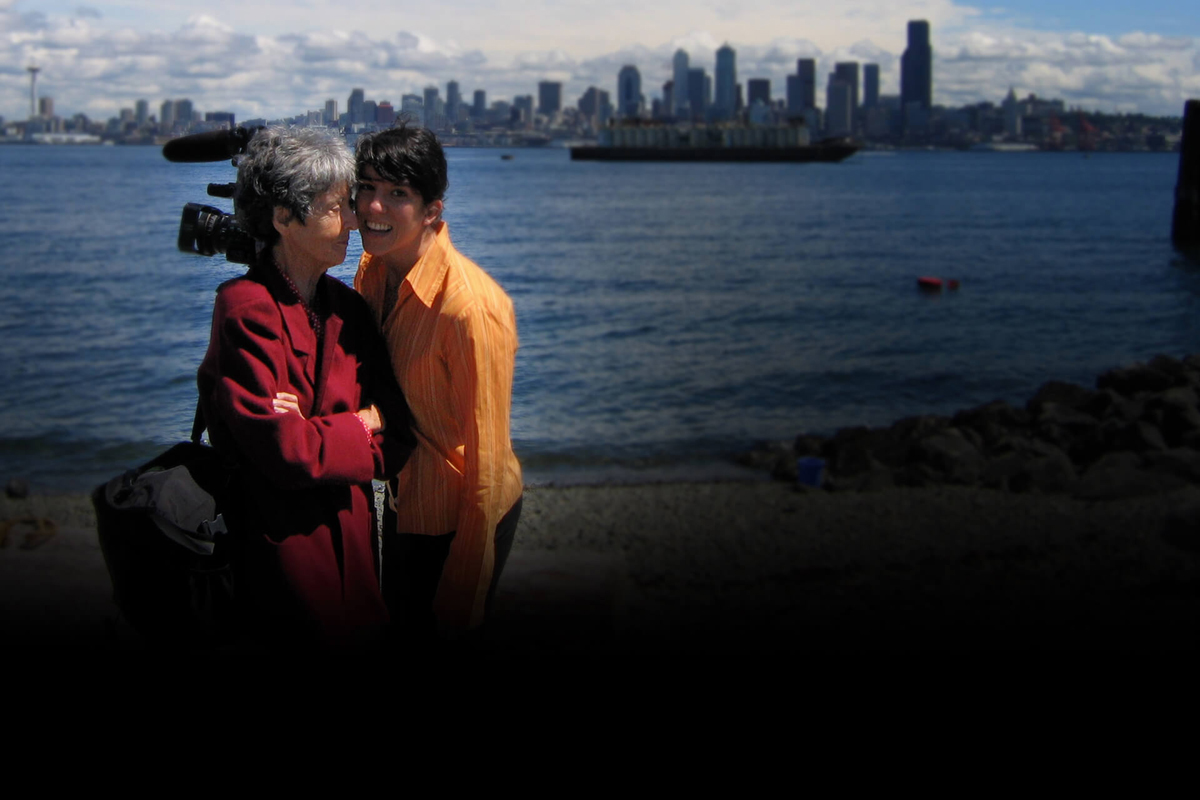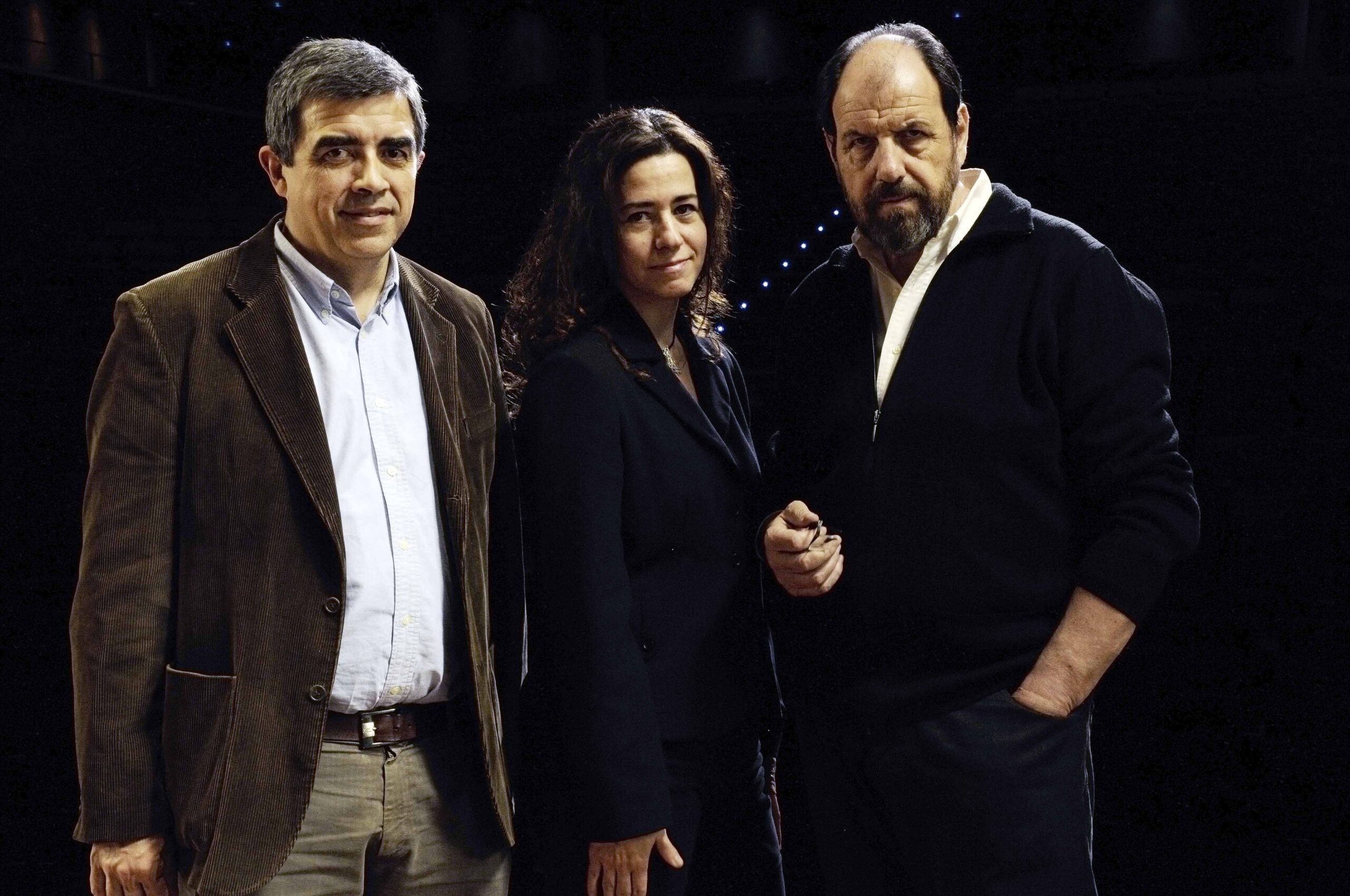 In this ambitious directorial debut, Klim Kozinsky combines fragments from Dostoyevky’s The Idiot with the philosophical concepts explored in Leibniz’ Monadology – hence the title’s amalgam. Characters move on a nearly empty stage, and in doing so their bodies eventually come together to reveal iconic paintings. Equal parts ethereal and unnerving, this provocative production explores the power of language in shaping the human condition.
In this ambitious directorial debut, Klim Kozinsky combines fragments from Dostoyevky’s The Idiot with the philosophical concepts explored in Leibniz’ Monadology – hence the title’s amalgam. Characters move on a nearly empty stage, and in doing so their bodies eventually come together to reveal iconic paintings. Equal parts ethereal and unnerving, this provocative production explores the power of language in shaping the human condition.
Leibniz formulates the model of an ideal world, at the center of which lies a soul, or its more simple form – a monad. Achieving an understanding of this world by means of reason, the soul develops and gradually rises to its Creator. But no philosophical dogma is capable of embracing the world: in its efforts to embrace life, it destroys it. The clash of ideas and reality give rise to war.
Prince Myshkin, being either spiritually blind or a genius, is charmed by the idea of unifying two worlds: the world of divine law and the earthly world. Myshkin tries to change the nature of things, to arouse the soul’s memory of divine principles, thus violating the natural course of things.
The play does not include Leibniz’s text per se although his ideas are woven into the musical structure of the performance. As such, one pattern – the twists and turns of Dostoyevsky’s novel – is woven into another that is drawn from the world of philosophical ideas and palindromes. The bible which Aglaya Yepanchina holds in her hands is merely a phone book.
Klim Kozinsky comments:
The entities of literature and theater are primordially locked in a severe conflict. There are two known ways out: either performance carves literature up and, thanks to the attendant creative tension, creates a new ‘theatrical’ text, or literature subdues theatre, turning it into a pattern of references to the source. I immediately abandoned the kind of theatre where, for some reason, someone must believe someone else, but at the same time I backed out of a literature-centric system, which is extremely obstinate and must be treated with kid gloves. Mine is an attempt not to splice theatre and literature together, but to separate them, thus multiplying them.
The Stanislavsky Electrotheatre is located in the heart of Moscow, on Tverskaya Street 23, and was founded almost a century ago in 1915 as the cinema palace — the Ars electrotheatre. After the revolution it became home to Konstantin Stanislavsky’s opera and drama studio, and not long after that, the Stanislavsky Drama Theatre. The symbolic legacy of these three locations, a cinema, an opera studio and a dramatic theatre, has been fully endorsed by the Stanislavsky Electrotheatre as it launches a new era.
ONE DAY ONLY!
From 5 May 2020 at 6.30pm CET for 24 hours
This post was written by the author in their personal capacity.The opinions expressed in this article are the author’s own and do not reflect the view of The Theatre Times, their staff or collaborators.
This post was written by Directed by Klim Kozinsky, Stanislavsky Electrotheatre (2016), Russia.
The views expressed here belong to the author and do not necessarily reflect our views and opinions.

